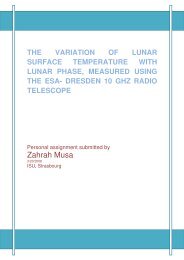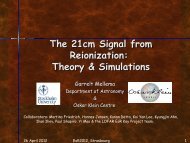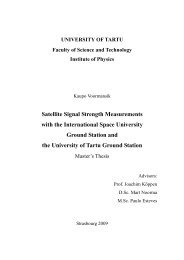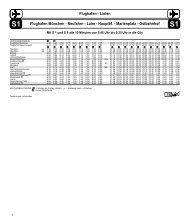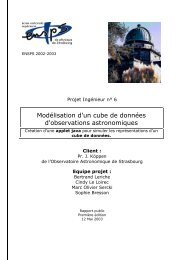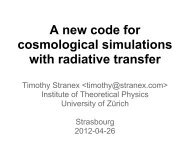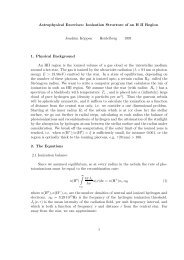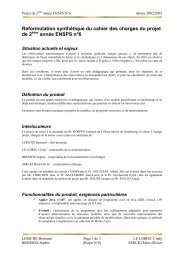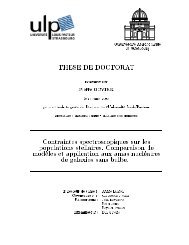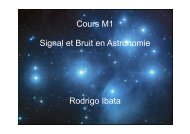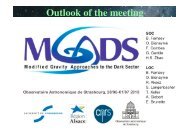View - Observatoire Astronomique de Strasbourg
View - Observatoire Astronomique de Strasbourg
View - Observatoire Astronomique de Strasbourg
You also want an ePaper? Increase the reach of your titles
YUMPU automatically turns print PDFs into web optimized ePapers that Google loves.
The Emerging Scholarly Brain 29<br />
context, and there are several different centrality measures. In a friendship<br />
network, where people are the no<strong>de</strong>s and they are linked to other people by<br />
friendship, the person with the most friends would be the person with the<br />
highest <strong>de</strong>gree centrality. Note that friendship is directional, I may consi<strong>de</strong>r<br />
you my friend, but that does not mean that you consi<strong>de</strong>r me a friend; thus<br />
the concepts of in-<strong>de</strong>gree and out-<strong>de</strong>gree. In a citation network the paper<br />
with the highest in-<strong>de</strong>gree is the most cited paper, while review articles<br />
would have very high out-<strong>de</strong>gree.<br />
Betweenness centrality is another “importance” measure. In a friendship<br />
network the most central people are those with friends in many different,<br />
otherwise autonomous cliques; in a journal to journal citation network the<br />
most central journals are the interdisciplinary journals (Ley<strong>de</strong>sdorff 2007),<br />
like Science or Nature, which are between otherwise autonomous fields, such<br />
as astronomy and neuroscience. Betweenness centrality is a key measure in<br />
an information flow network; the high betweeness centrality no<strong>de</strong>s facilitate<br />
information transfer between fields.<br />
The currently most used centrality measure is the expected occupation<br />
time for each no<strong>de</strong> when visited by a random walk, where the agent randomly<br />
follows links from no<strong>de</strong> to no<strong>de</strong>. This is normally called eigenvector<br />
centrality, as the result is the same as the first eigenvector of the no<strong>de</strong>no<strong>de</strong><br />
connectivity matrix (Bonacich 1971). Google’s famous Page-Rank algorithm<br />
(Brin and Page 1998) is essentially eigenvector centrality, with<br />
clever implementation <strong>de</strong>tails.<br />
There are several other centrality measures. Kurtz and Bollen (2010)<br />
give a brief introduction; Koschützki, et al (2005) a <strong>de</strong>tailed discussion.<br />
4.2. LOCAL MEASURES<br />
Working provisional copy - Pls do not circulate<br />
While measures which solve for globally optimum measures are clearly <strong>de</strong>sirable<br />
and useful, they are often not feasible. This is especially true in<br />
situations where the data is inherently highly multipartite. Journal articles,<br />
for example, may be connected by citations, but they may also be<br />
connected by having the same author, or having been read by the same<br />
rea<strong>de</strong>r, or concerning the same subject matter, or the same astronomical<br />
object, or ....<br />
An interesting question is how much is lost if one uses local measures,<br />
instead of attempting a global solution. Some recent work discusses this.<br />
Eigenfactor (West, et al 2010a) is a useful measure of scholarly journals;<br />
it is available in the Thompson-Reuters Web of Science, and finds frequent<br />
use by librarians in making purchasing <strong>de</strong>cisions. The Eigenfactor is essentially<br />
eigenvector centrality, measured on the journal to journal citation<br />
graph.



